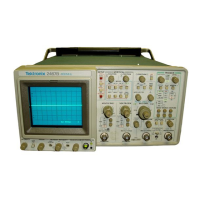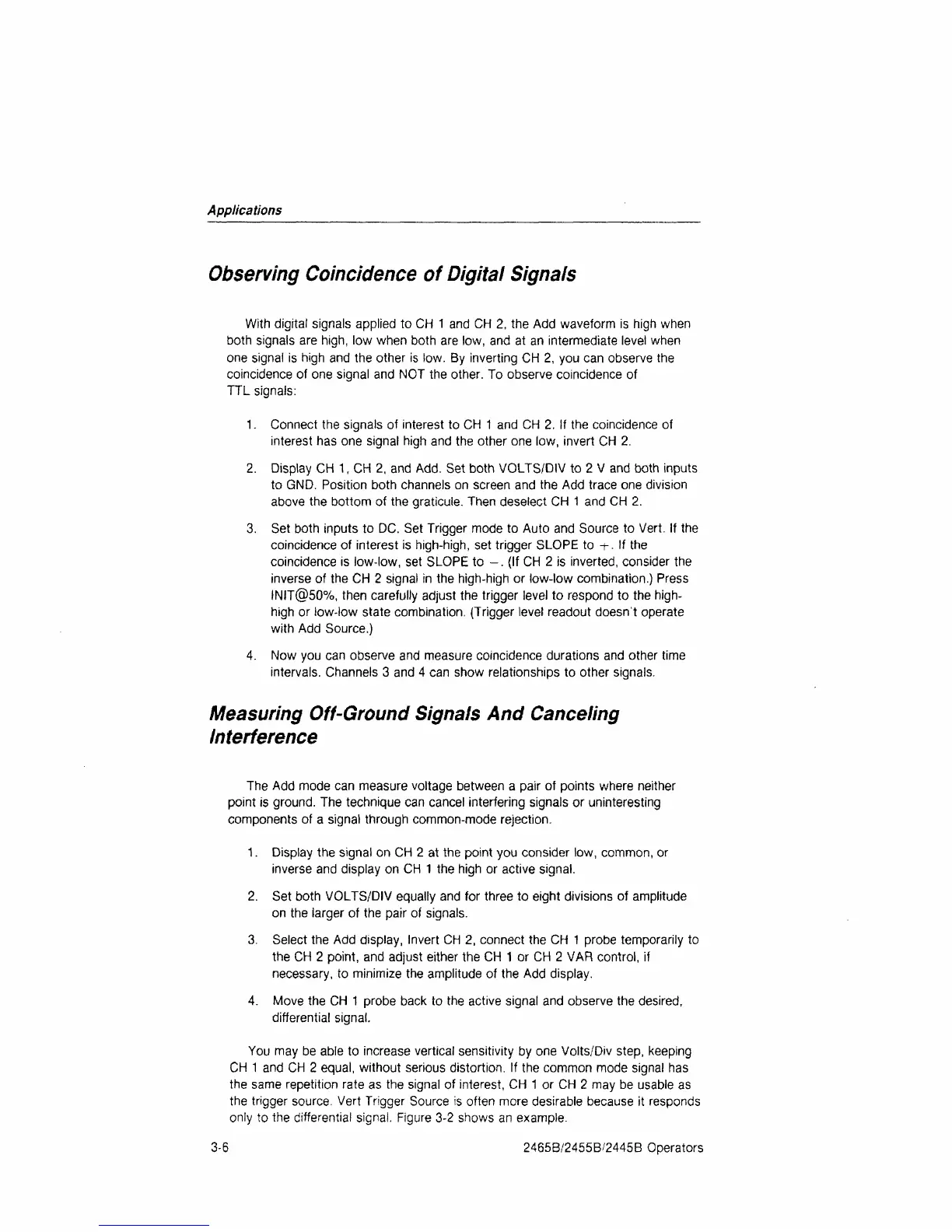Applications
Observing Coincidence
of
Digital Signals
With digital signals applied to CH 1 and CH 2, the Add waveform is high when
both signals are
high,
low when both are low, and at an intermediate level when
one signal is high and the other is low. By inverting CH 2, you can observe the
coincidence of one signal and NOT the other. To observe coincidence of
TTL signals:
1.
Connect the signals of interest to CH 1 and CH 2. If the coincidence of
interest has one signal high and the other one low, invert CH 2.
2.
Display CH 1, CH 2, and Add. Set both VOLTS/DIV to 2 V and both inputs
to GND. Position both channels on screen and the Add trace one division
above the bottom of the graticule. Then deselect CH 1 and CH 2.
3. Set both inputs to DC. Set Trigger mode to Auto and Source to Vert. If the
coincidence of interest is high-high, set trigger SLOPE to -t-. If the
coincidence is low-low, set SLOPE to -. (If CH 2 is inverted, consider the
inverse of the CH 2 signal in the high-high or low-low combination.) Press
INIT@50%, then carefully adjust the trigger level to respond to the
high-
high or iow-low state combination. (Trigger level readout doesn't operate
with Add Source.)
4.
Now you can observe and measure coincidence durations and other time
intervals. Channels 3 and 4 can show relationships to other signals.
Measuring Off-Ground Signals
And
Canceling
Interference
The Add mode can measure voltage between a pair of points where neither
point is ground. The technique can cancel interfering signals or uninteresting
components of a signal through common-mode rejection.
1.
Display the signal on CH 2 at the point you consider low, common, or
inverse and display on CH 1 the high or active signal.
2.
Set both VOLTS/DIV equally and for three to eight divisions of amplitude
on the larger of the pair of signals.
3. Select the Add display, Invert CH 2, connect the CH 1 probe temporarily to
the CH 2 point, and adjust either the CH 1 or CH 2 VAR control, if
necessary, to minimize the amplitude of the Add display.
4.
Move the CH 1 probe back to the active signal and observe the desired,
differential signal.
You may be able to increase vertical sensitivity by one Volts/Div step, keeping
CH 1 and CH 2 equal, without serious distortion. If the common mode signal has
the same repetition rate as the signal of interest, CH 1 or CH 2 may be usable as
the trigger source. Vert Trigger Source is often more desirable because it responds
only to the differential signal. Figure 3-2 shows an example.
3-6 2465B/2455B/2445B Operators

